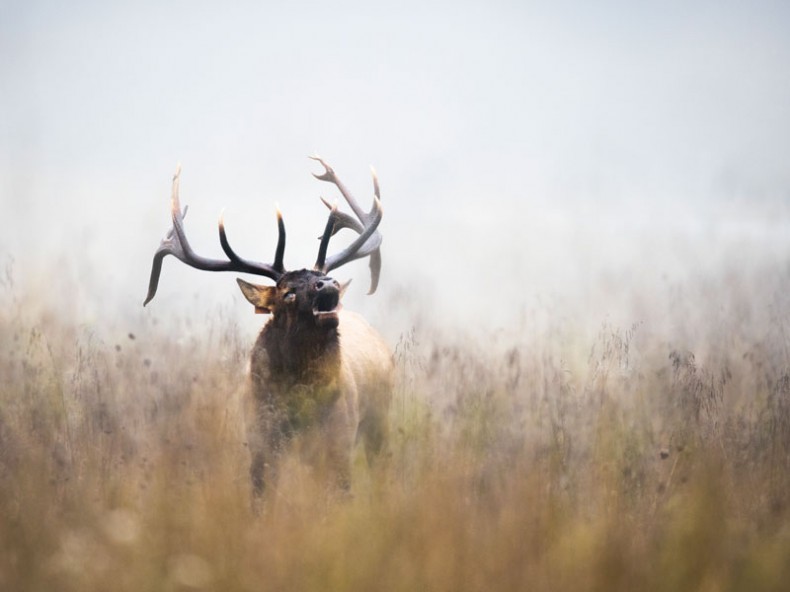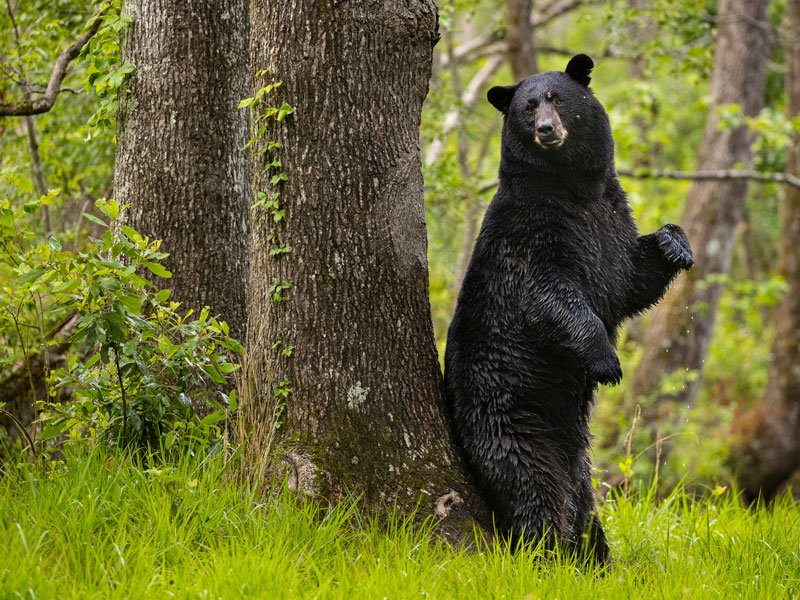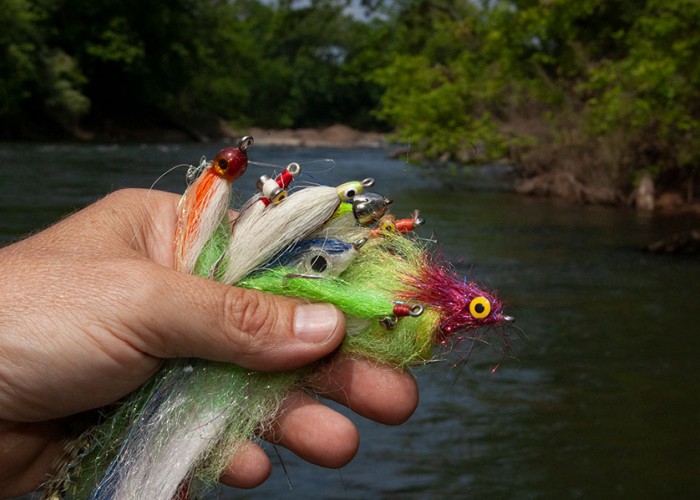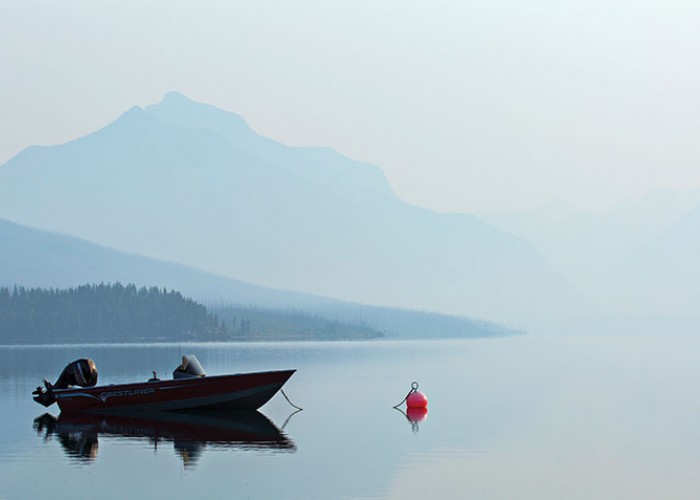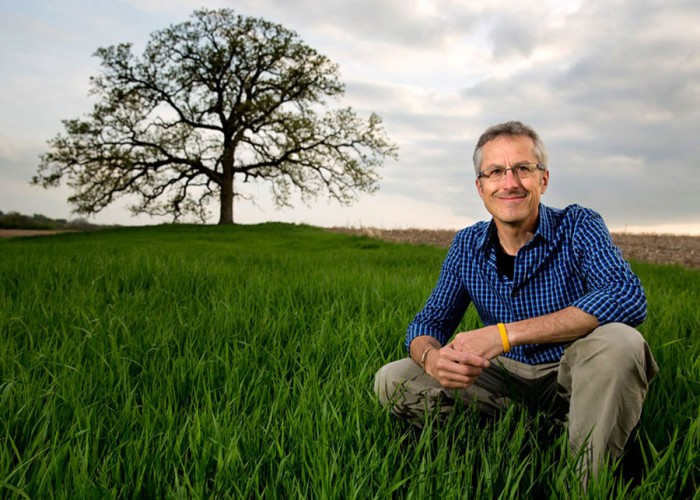Outdoor Photography Tips: ‘Be Out There’
Advice from NC wildlife photographer Neil Jernigan
By Donna Campbell SmithWhether searching for North Carolina’s black bear in Alligator Wildlife Refuge, wading thigh-deep in a swamp to set camera traps to capture starlit images, hiking in Cherokee elk territory, or canoeing on a pond near his home for prothonotary warblers, Neil Jernigan is excited about photographing wildlife.
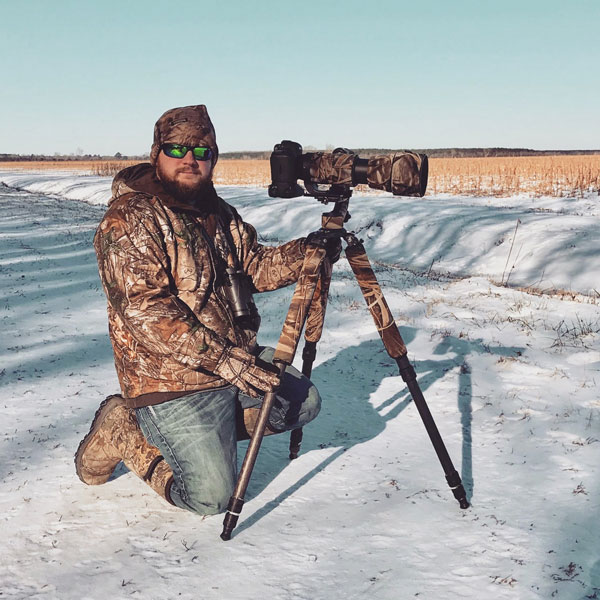
Visit neiljernigan.com to learn more about Neil, including upcoming workshop dates. Photo by Tom Harrison.
Neil modestly admits to having won around 10 or 15 wildlife photography contests through the years, including the 2008 grand prize in the contest held by Wildlife in North Carolina magazine, published by the NC Wildlife Resources Commission.
Viewers can see his excitement on his YouTube channel. Without fail, he expresses awe and exuberance at seeing the creatures he photographs. Neil not only shares his images, but also his knowledge. He lists the equipment used in his video descriptions, gives tips in his narratives and offers workshops.
“Everything in my life seemed to direct me to photography,” Neil explains. “I grew up hunting, fishing, and spending a lot of time outside in nature. We always had cameras to document. My mom ran a scrapbook business, so taking pictures was very important to remember everything, and we documented our lives for our family to look back on in the future.”
“Things like knowing where your subjects will be and what they eat is more valuable than camera settings.”
Neil purchased his first camera when he was 15 with money earned working in the tobacco field. He created a wedding and portrait photography business his senior year of high school.
“I operated that business for a few years, knowing that ultimately I wanted to photograph wildlife full time.”
Neil says to be successful in wildlife photography, you need to know as much about your subjects as possible.
“Being a good naturalist will make you a great photographer. Things like knowing where your subjects will be and what they eat is more valuable than camera settings. The more you know about your subject, the easier it will be to photograph them.”
He goes on to say that having the knowledge of settings and your equipment is very important. Jernigan says that over the years he has learned that pre-visualizing an image before it happens is extremely beneficial. Being able to go to certain settings without really thinking about it comes with time.
“I’ve had some pretty close encounters over the years — bears, wolves and elk,” he says when asked if he’s ever felt in danger while photographing large game. “I’ve never felt threatened or felt in danger.” He does recommend taking bear spray when photographing bears. (So far, he’s not had to use it.)
Neil offers a final tip to amateur photographers: “I have the secret to wildlife photography. It’s really simple. You have to be out there! The more time you spend in the field, the better you will be. You can’t get that rare once-in-a-lifetime photograph by sitting on the couch watching TV.”
-
More tips for taking better photos
-
Share this story:

